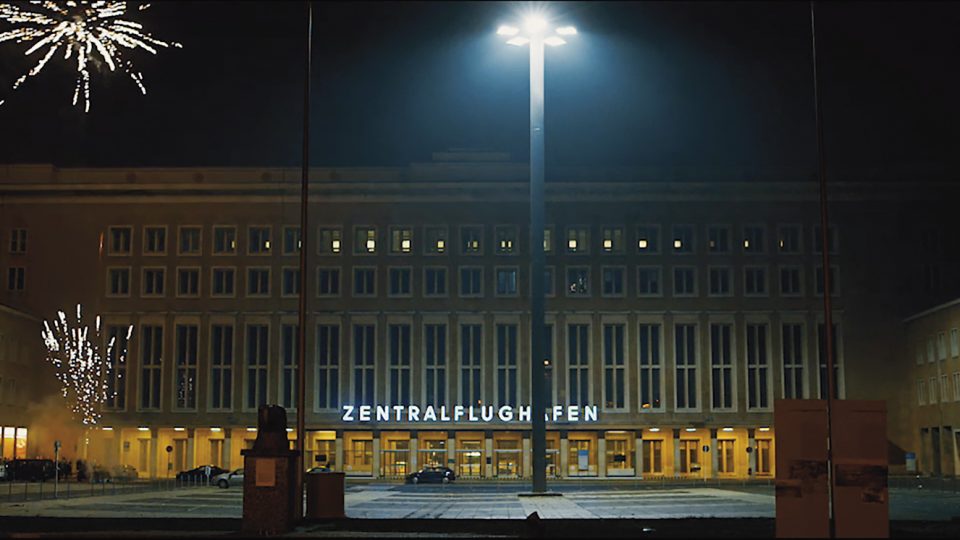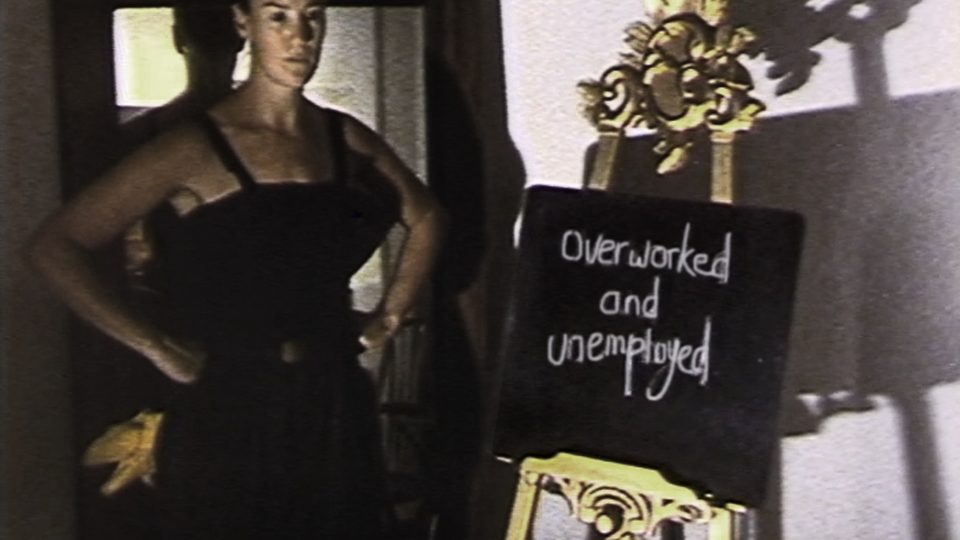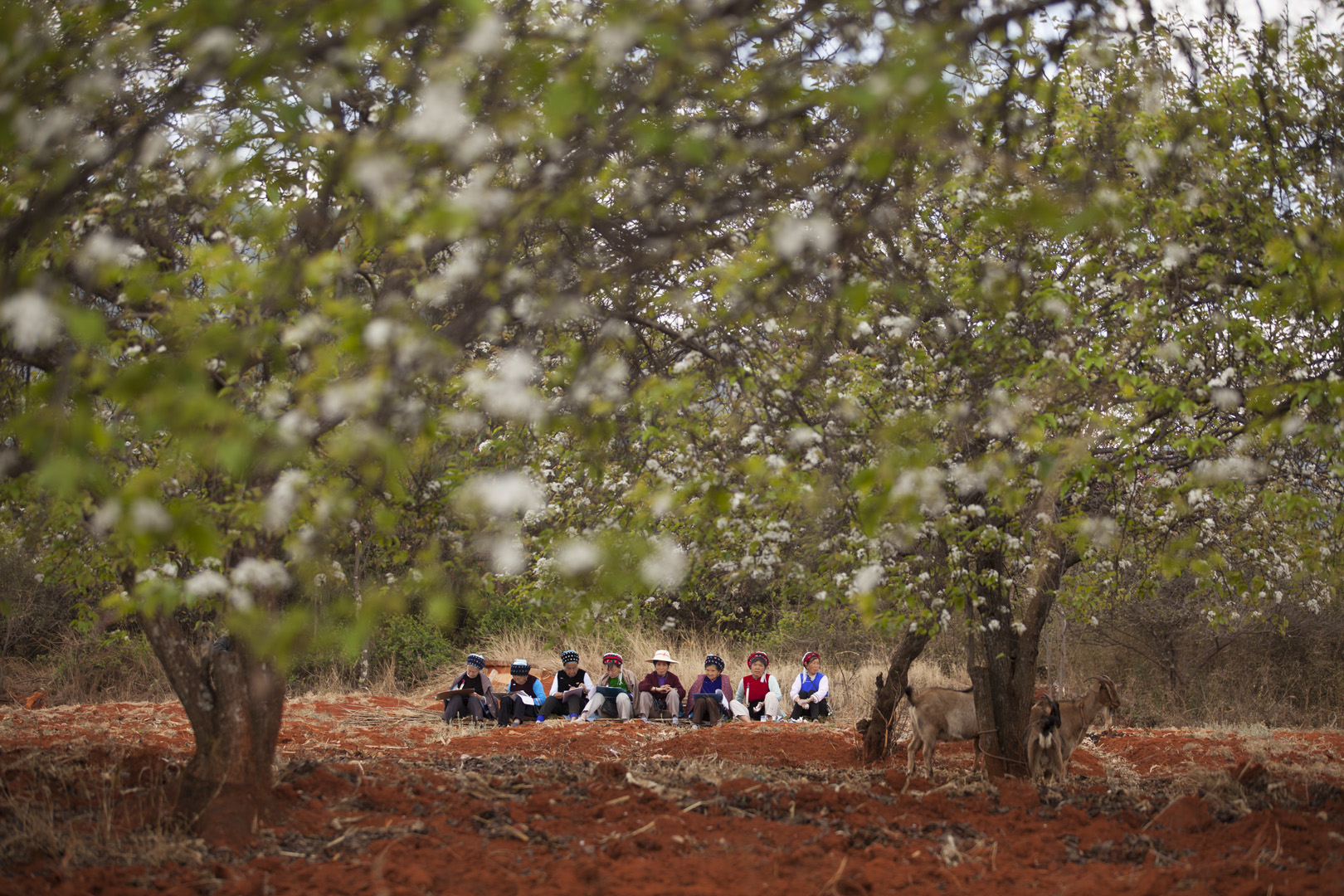
Watching Up the Mountain (2018), a documentary debut from Chinese filmmaker Yang Zhang (who has made a number of fiction films, including Shower, 1999), I was reminded of Vladimir Nabokov’s extolling the virtues of narrative ambiguity: The fact that many times what we don’t know in a book, or a film, is as appealing as what we do know. Up the Mountain is a case in point. In a mountainous village, near Shuanglang, in the picturesque Erhai Lake region, painter Shen Jianhua runs a tight-knit painting studio for the local folk painters. Early in the film, we see two women from the village being told that they are invited to join the studio practice under his tutelage, and to bring “paper money” as an offering to join in. This brief exchange, like the entire film, is shrouded by cultural nuance. Is paper money symbolic, is it a fee, an offering? What are the actual terms of contract in this relationship? I found my western brain wrecked over such questions, but also, mainly, was instantly seduced and intrigued by the studio’s setting, routines, and work ethic.
The cloud-and-snow-shrouded mountain itself is like a picture-postcard. In one shot, we observe Shen facing the large window in his spacious, airy living room, through which we spot the mountain tops. Classical music is playing. Often opera arias are heard in the house, which effortlessly combines the natural elements of wood and stone with modernist touches. In it, Shen and his team, plus his teenage daughter and his younger wife, follow a routine that seems almost monk-like. There are distinct times for cooking, for manual work, and then, of course, for painting. The painting scenes are rapturous. Firstly, because the painters themselves—the women from the local village—come clad in gorgeous colorful clothes. Vibrant rich green, red, blue motifs, scarves, and earrings offset their simple khaki and white clothes. The shoes are often adorned with elaborate designs. This gear itself then looks like a gorgeous artifact. Then there is the setting of their work—be it in a meadow, facing a blooming tree and goats, over the mountain tops and valleys, or indoors, at an open window, through which the lights streams in freely, bathing the women in Vermeer light—the atmosphere, the aura, is awe-aspiring.
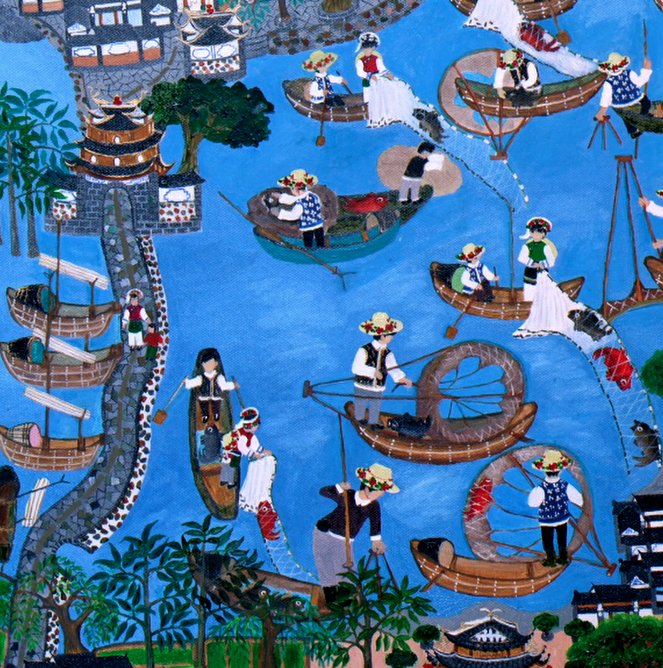
One of folkloric paintings in Up the Mountain
Much of this is due to Zhang’s acute eye, which reflects his ability to frame these women so that their gestures, poses, faces themselves become indelible portraits. There is effortless elegance in Zhang’s compositions, which he frames in a square rather than a rectangular screen, so that his own framing approximates the folk paintings that the women are making. In fact, this seems to be part of Zhang’s message: Artwork flows from the imitation of nature, and Zhang’s own art takes after what nature and these women present him with. Often Zhang frames the natural scene, and then reveals how the folk painters capture it. There is more than a bit of Zen in all this. In fact part of the documentary focuses on the women’s devout practices, on how their offerings to the gods flow into their life and work, and then combine with the local ceremonies and holiday celebrations.
The relationships in the workshop are nuanced. Shen is deeply respected in the village. The villagers come to ask for his advice. In one whimsical, albeit also deadly serious scene, Shen comes to the home of one of his elderly apprentices, to advise her and her husband on how the family might best construct a bathroom, which they currently lack. The bathroom is need, they feel, if their daughter—who seems to live far, perhaps in a city—is to bring home her boyfriend. In the workshop, Shen’s clearly privileged position means that he does no work himself, a middle-aged patriarchal figure—his young wife oversees most work.
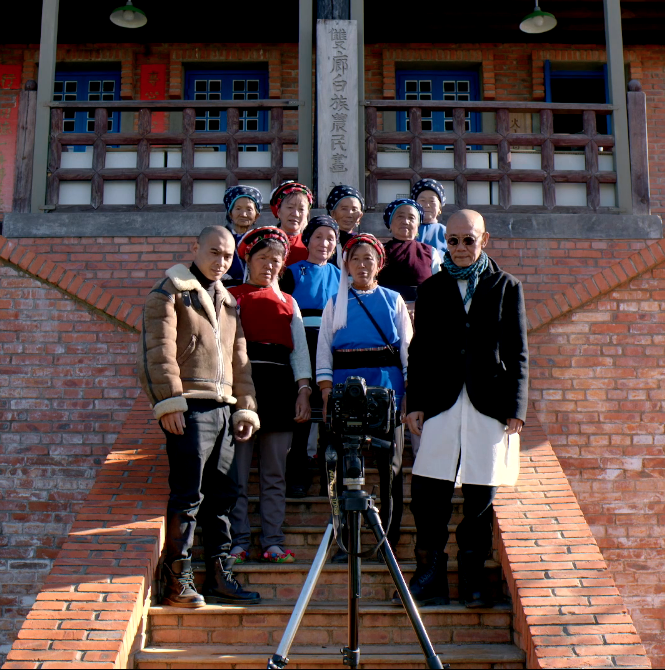
The protagonists, including master Shen, take a group portrait
If Zhang is a portraitist, and a landscape painter, he is a bit of a Brueghel the Elder. Which is to say, his work possesses uncanny wit. There is the detailed work, the depiction of all the sensual pleasures of the physical world. Zhang captures the dissonances between the folk painters and Shen’s western ways, his western attire—the dark Yoko Ono glasses, the long T-shirt that comes to resemble a dress. But then there is also the nuance and the thrill of language. Here the women are again our main focal point: Zhang films them as they gossip amongst each other while painting. About husbands who disappoint them, about the practicalities of long marriage, their financial woes, about cooking, neighbors, and children. Unlike their bright folklorist paintings, these flesh women can be crude or brusque, but they are also incredibly generous towards each other, and their work seems to give them unprecedented joy. Of course, this is partly because Zhang does not delve into the logistics of their trade: Who is buying their paintings? For how much?
We get some sense of this when Shen’s main apprentice, Zhao Dinglong, who is hoping to get married, confesses that he does not see himself as having high prospects in marriage. Zhao works on large paintings, can only paint about one a year, and has no idea if he will make any money. How has he survived thus far? We do not entirely know. But in this part of the film, in the quick vignettes, we follow Zhao’s meetings with his girlfriend, his heartfelt negotiations—he very much wishes to stay in the village, and not move to far, more prosperous Hangzhou, where his girlfriend’s parents are from—and his ultimate defeat. In this part too, Zheng provides a rather ironic framing. The young apprentice’s ambition to carry out the lofty, artistic life in Shen’s workshop meets head-on with the exigencies of life. The rarefied atmosphere that Shen has created around him, after all, is at odds with the bustle, and the cramped, dusty streets and shops of the towns below the mountain. When we see Zhao in the last frame, he is carrying a folk painting—a gift from the “grannies”—on his back, and then deposits it with his luggage, into a van that will bear him away. Yet this does not seem entirely like a defeat. Shen himself has said that to paint it is important to have lived a full life. Zhao leaves behind the village, but he is about to become an apprentice to life, so to speak. Given that some of the most dedicated painters in Shen’s monastic workshop are eighty-years-old, it seems that there is always the possibility of Zhao returning one day to his calling.
Up the Mountain premiered in IDFA‘s international feature-length documentary competition this past November
